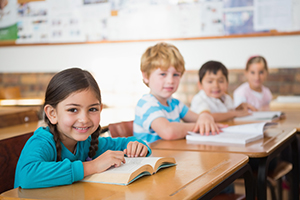 1995 is a dual landmark in the history of literacy studies. First, because the International Literacy Association (ILA), formerly the International Reading Association, published the pioneering book The Literacy Dictionary. Second, because the word literacy is used in the book’s title.
1995 is a dual landmark in the history of literacy studies. First, because the International Literacy Association (ILA), formerly the International Reading Association, published the pioneering book The Literacy Dictionary. Second, because the word literacy is used in the book’s title.
Inspired by the extensive changes in education theory and practice, The Literary Dictionary both defines terms and delves into the social components of language. Intended as a resource for educators, the book is a reference tool that serves to update and expand upon information introduced in its predecessor, published more than a decade earlier.
This lexicographic resource is significant, as it provides readers with a comprehensive list of 38 representative types of literacy, a full-page essay on literacy by Richard L. Venezky, a two-page entry on literacy, and five entries on specific terms: literacy event, literacy fallacy, literacy gap, literacy involvement, and literacy laboratory.
If I were asked to update the list of literacy types with an example of a relevant concept, I would make a case for “Global Peace Literacy.” This compound term combines globalization and peace, two challenging, life-changing, life-supporting, life-sustaining forces that characterize humankind’s current educational efforts toward deeper knowledgeability.
How can Global Peace Literacy be implemented? By engaging literacy educators in initiatives including:
1. Helping readers/viewers (of all ages) access and make the most of peace-inspiring publications, print or online, in as many languages as possible. In short, creating a world of peace-loving and peace-promoting readers/viewers.
2. Advocating the inclusion of Global Peace Literacy in K–12 curriculum, along with Global Human Rights Literacy and Global Dignity Literacy.
3. Supporting the establishment and operation of Global Peace Literacy centers in a variety of public spaces, including schools, places of worship, and other gathering places.
4. Providing financial support to intraeducational/cultural/intereducational research on Global Peace Literacy as a sustainable commitment to cultivating what I would call LIF PLUS: the life-improving force of peaceful language use.
5. Recognizing the need for Global Literacy to take a peaceful dimension, given the increasing threat and destruction brought about by terrorism, especially of a cultural nature. In such spirit, a Global Peace Literacy educator would help prepare today’s and tomorrow’s citizens to cope with culturally/communicatively harmful practices and to learn to prevent and overcome violence .
6. Encouraging education leaders to take part in a sustained campaign for a world in which Global Peace Literacy thrives through communication including reading, writing, speaking, and listening.
In the revised, expanded edition of ILA’s The Literacy Dictionary, perhaps a prominent place will be reserved for Global Peace Literacy.
Francisco Gomes de Matos is a peace linguist in Recife, Brazil and a word list reviewer for The Literacy Dictionary. He welcomes feedback on his suggested addition.